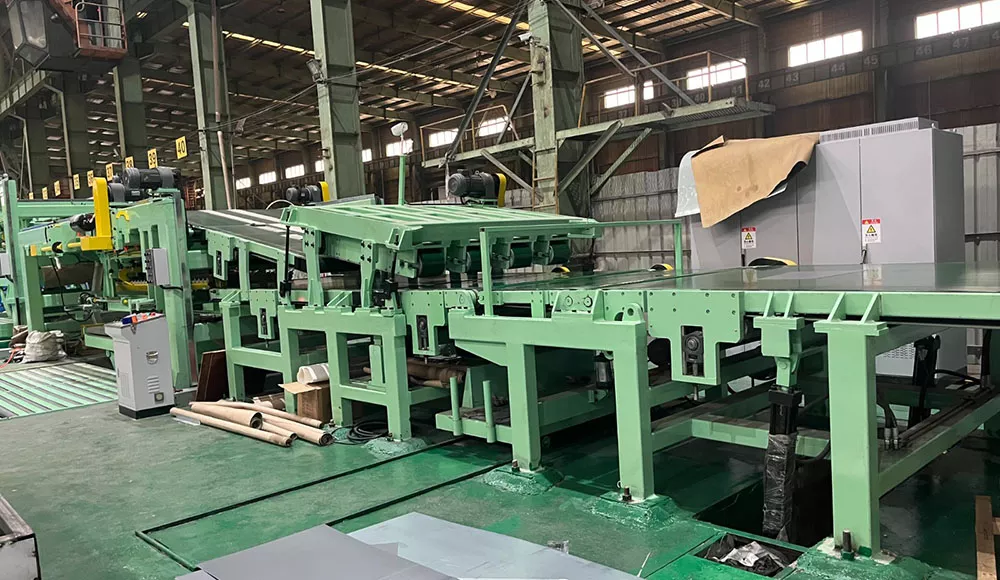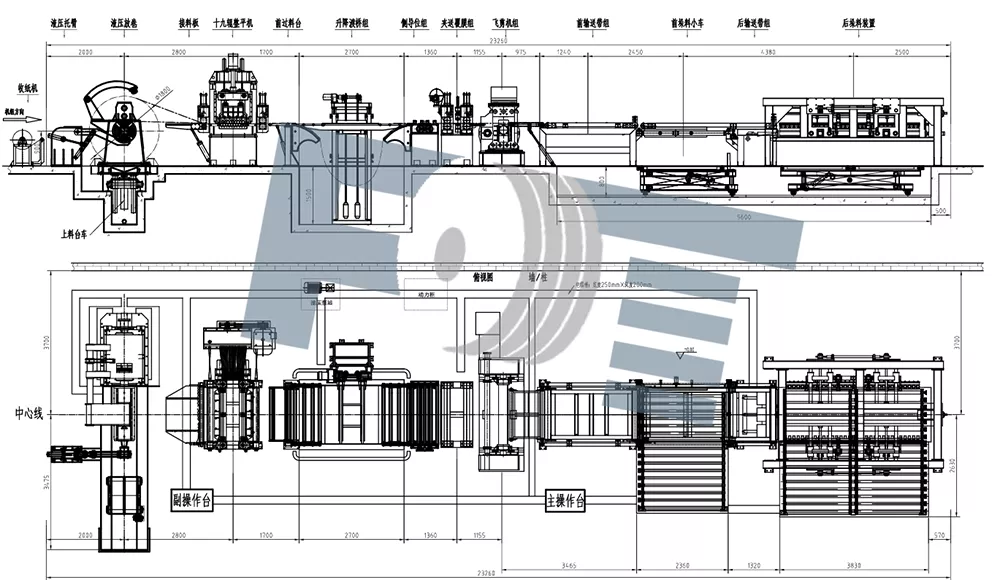How the Steel Industry Uses Flying Shears for Efficient Cutting?
You use flying shear technology to help steel and metal lines work smoothly. In hot rolling mills, this tool cuts moving metal very fast. The line does not need to stop. The results are clear:
|
Improvement Aspect |
Quantitative Evidence |
Impact |
|
Continuous Production |
Shearing without stopping the line |
No downtime, more output |
|
High-Speed Shearing |
Several hundred meters per minute |
Makes production faster |
|
Cutting Precision |
Millimeter-level accuracy |
Keeps quality steady, fewer mistakes |
|
Material Waste Reduction |
Saves money, less loss |
|
|
Downtime Reduction |
Shearing without line stoppage |
More time working |
You see maintenance downtime drop by half. Cutting speed goes up by 40%. With a flying shear, you get exact cuts, waste less, and save money. You also keep the line running longer.
Key Takeaways
Flying shears cut steel while it moves. The production line does not stop. This makes work faster and increases output by up to 40%. These machines make very exact cuts. They can cut with millimeter accuracy. This helps use less material and saves 5-10% of steel. It also saves money. Automation in flying shears makes work safer. The machines do dangerous jobs. This means workers get hurt less often. There are different flying shears for different steel shapes and thicknesses. This helps mills cut steel well and keep good quality. The shear speed matches the steel speed. This gives smooth cuts and helps blades last longer. It also means less time fixing machines.

Flying Shear
What Is a Flying Shear
Definition
A flying shear is used to cut steel or metal as it moves. The tool cuts the material while it is still moving. The flying shear moves at the same speed as the steel. This helps make every cut clean and exact. You often see this tool in rolling mills. It helps cut bars, rods, or sheets fast and safely.
Tip: The flying shear does four main things. First, it speeds up to match the steel. Then, it cuts while moving. Next, it slows down. Last, it goes back to where it started. This keeps the line working well.
Here is a table that shows some important terms and features:
Main Parts
A flying shear has many important parts. Each part helps the machine work fast and safe.
- Cutting blades: These sharp parts cut the steel or metal.
- Motor: This makes the blades move and controls their speed.
- Gearbox: It sends power from the motor to the blades.
- Crankshaft mechanism: In some flying shears, this moves the blades up and down.
- Control system: This uses sensors and computers to match blade speed to the steel.
- Butterfly arms: These help put the material in the right spot for cutting.
- Electrical panel: You use this to control and watch the whole machine.
All the parts must work together. The control system is very important. It makes sure the blades move at the right time and speed. You can change the size, power, and speed of a flying shear. Most flying shears have strong blades and motors. This lets you cut thick or thin steel. Some machines can cut more than one row at once.
Note: Modern flying shears use PLC control systems for automation. This lets you set up the machine to run by itself. It saves you time and work.
Flying Shear Types
When you work in a steel mill, you need to choose the right flying shear for your job. Each type has special features that help you cut different shapes and sizes of steel. You can use flying shears to cut bars, rods, strips, tubes, and billets. The type you pick depends on the speed, thickness, and temperature of the material.
Rotary Shear
Rotary shears use round blades that spin fast. You often use them for high-speed cutting of thin, flat steel. These shears can cut at speeds up to 120 meters per minute. You get very precise cuts, with tolerances as tight as ±0.2 mm. Rotary shears work well with both carbon and alloy steels. Their design lets you keep the production line running without stopping. You also save time during coil changes and reduce waste by about 22%. Rotary shears use strong blades made from high-speed steel or tungsten carbide, so they last a long time even under tough conditions.
Tip: Rotary shears are a great choice when you need to cut a lot of steel quickly and keep your line moving.
Crank-Type Shear
Crank-type shears are best for cutting thicker steel, usually more than 3 mm thick. You use these shears when you need high precision and smooth, square edges. The crank mechanism matches the speed of the steel, so you get even cuts and less force is needed. Crank-type shears last longer and give you better edge quality than other designs. They also help reduce wear on the blades and motors, which means less downtime for repairs. In real factories, crank-type shears can cut thick strips at speeds up to 37.5 meters per minute.
Hot and Cold Applications
You can use flying shears in both hot and cold rolling mills. In hot mills, you cut steel while it is still very hot and soft. This helps shape the steel before it cools. In cold mills, you cut steel after it has cooled down, which gives you more precise shapes and sizes. Flying shears are also grouped by what part of the product they cut, such as head cutters or fixed length cutters. You can find different blade types, like parallel, oblique, or disc blades, to match your needs. The right flying shear helps you keep up with fast production lines and handle many kinds of steel products.
Note: Today, most flying shears use automated controls. This lets you adjust settings quickly and keep your production line running smoothly.
Flying Shear Operation
Working Principle
You use a flying shear to cut steel or metal while it moves along the production line. The main idea is simple. The shear matches the speed of the moving material. This lets you cut without stopping the line. The blades move in a special path. They speed up, cut, and then return to the starting point. You get a clean cut every time.
The cutting knives follow a complex path. They do not just move straight up and down. They also rotate and slide at the same time. This keeps the blades almost straight with the steel strip during the cut. You get a smooth edge and less force is needed. The flying shear uses a control system to manage this motion. You can set the cut length and speed. The machine will adjust itself to match your needs.
Tip: When you use a flying shear, you can cut different shapes and sizes. You only need to change the settings on the control panel.
Here is a simple list of the steps in the working cycle:
- The shear waits for the steel to reach the right spot.
- The control system speeds up the blades to match the steel.
- The blades cut the moving steel.
- The blades slow down and return to the start.
You can see how each step helps keep the line moving fast and safe.
Synchronization with Production Line
You must keep the flying shear in sync with the rest of the production line. If the shear moves too fast or too slow, you get bad cuts or even damage the machine. Modern mills use advanced control systems to solve this problem. These systems use sensors and computers to watch the speed of the steel. The flying shear then matches its speed and position to the moving material.
Case studies show that when you synchronize the knife speed with the steel, you get better cuts. The knives stay almost straight with the strip. This reduces the force needed to cut and makes the cut surface smoother. You also get longer knife life and better accuracy. Engineers use special motion profiles, like S-curve or trapezoidal shapes, to control the speed. This helps the flying shear blend smoothly into the line.
Industry reports highlight that some rotary shears can change the cut length while running. You do not need to stop the line. The shear adjusts its speed and timing to match the steel. This makes your production more flexible and efficient. You can handle different products without slowing down.
Note: Good synchronization means less waste, better quality, and fewer stops. You keep your mill running longer and save money.
Here is a table that shows what happens when you synchronize the flying shear with the production line:
You can see that keeping everything in sync gives you many advantages. Your production line runs faster and with fewer problems.

Flying Shear Setup Schematic
Benefits
Speed and Productivity
You want your steel line to go fast. A flying shear helps you cut steel quickly. The line does not stop for each cut. You can cut steel at very high speeds. This means you finish more work in less time. The machine matches the speed of the moving steel. Everything keeps moving smoothly.
Many factories say flying shears boost output by up to 40%. You can fill more orders and meet tight deadlines. Workers do not wait as much, and machines stay busy. This helps your business grow and beat other companies.
Tip: Cutting faster lets you take bigger jobs and deliver products sooner.
Precision and Waste Reduction
Every cut needs to be exact. Flying shears give you millimeter-level accuracy. This keeps your product quality steady and lowers mistakes. Fewer errors mean you waste less material. Reports show these machines help you cut steel with great accuracy. You get less scrap and more good product.
Factories using flying shears see 5-10% less material waste. You save money by using more of your raw materials. You also help the environment by sending less scrap to landfills. Many industries, like automotive and aerospace, use flying shears for lean manufacturing and green goals. Automation lets you set the exact length and shape you need. You get the right cut every time.
Note: Reducing waste saves money and helps your company’s environmental goals.
Automation
You want workers to be safe and do important jobs. Automation in flying shears does the hard and risky work. Automated systems lower the chance of injuries like pinched fingers or cuts. Machines handle heavy lifting and repeated motions. Your team avoids dangerous manual work.
- Automated systems lower the risk of muscle injuries and first aid accidents.
- Machines do the pushing, pulling, and moving of heavy steel.
- You see fewer accidents and a safer workplace.
- Employers add safety features like machine guards to protect everyone.
Automation also means you need fewer workers for each job. Your team can focus on quality checks and skilled tasks. You get more done with less effort, and your factory runs better.
Tip: Automated flying shears help you cut steel faster, safer, and with less work for your team.
You see how a flying shear helps your steel mill work faster and with more accuracy. This tool lets you cut steel without stopping the line. You get more products in less time and waste less material. Modern rolling mills depend on flying shears for smooth, nonstop production. New technology keeps making these machines better. You can expect even more speed and precision in the future.
FAQ
What materials can you cut with a flying shear?
You can cut many types of steel, including carbon steel, stainless steel, and alloy steel. You can also use flying shears for aluminum and copper. Always check the machine’s specifications for the best results.
How do you keep flying shears safe to use?
You should use safety guards and emergency stop buttons. Automated controls help prevent accidents. Always train your team before they use the machine. Regular checks keep everything working safely.
Can you change the cut length while the line runs?
Yes, you can adjust the cut length on most modern flying shears without stopping the line. Use the control panel to set a new length. The machine will match the new setting right away.
What maintenance do flying shears need?
You should check the blades for wear, keep the machine clean, and inspect the control system often. Lubricate moving parts as needed. Regular maintenance helps you avoid breakdowns and keeps the machine running smoothly.

